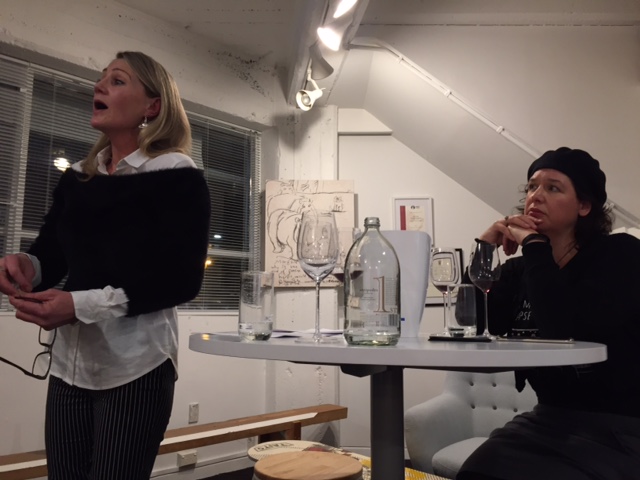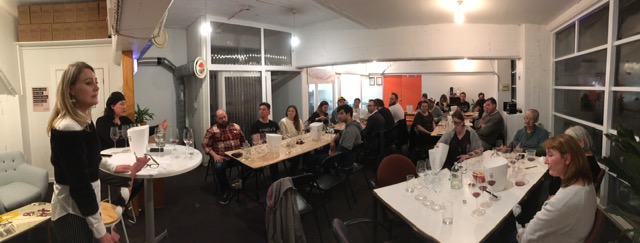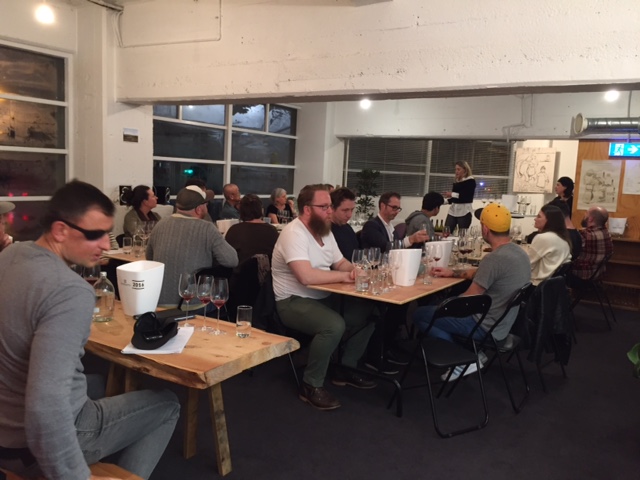Soil types of North Canterbury and their influence on the resulting wines
Do soils really impact on the way wine tastes? Scientists have not yet been able to explain this scientifically but that does not mean that it doesn’t happen. There is an overwhelming majority of the world’s most compelling and complex wines made by people who hold the notion of terroir as being critical to wine quality. Terroir is a French term which means that a wine shows characteristics in the resulting wine from where it is grown; that of the aspect, the slope, altitude and the soil in which the vines grow. In fact, the French even have a term for this ‘gout de terroir’. Meaning the wine tastes like the place the vines grow. As a result, typicity of a region as represented in a wine is one of the main defining rules of the whole French Appellation system, thus supporting the argument that soils do impact on the way wine tastes. No region highlights this more strongly than Burgundy where hill sides have been divided into often very small vineyards because they express different characters in the wines which warrant them being bottled separately. This classification system happened centuries ago and was mostly recognised by the Monks who worked the soils of Burgundy. Observation being their tool for this classification system. A tool often sadly lost on humans today. Current scientific work leads to a few schools of thought as to the impact of soils on wine. We know that all flavour compounds are synthesized in the vine made from organic molecules derived mostly from photosynthesis and inorganic ions taken up from the soil. Some believe that the greatest effect of soil type is through its physical properties and specifically through the water supply to the vine. The best terroirs are ones with free-draining soils with the water table high enough to ensure a regular water supply which recedes on version to reduce vigour in the vine. Meaning the vine ripens the fruit rather than put energy into vegetative growth.
The microbiology of the soil; fungal, bacterial and mycorrhizae are all seen as important and assist the vine with nutrient uptake. Yet again does this impact on the way wines taste is yet to be scientifically proven. Different soil types certainly have different microbial organisms due to the chemical make up of the soil and the physical structure of the soil which may explain why different soils produce different flavours in wine. Certainly mycorrhizae are essential for vines to take up nutrients in the soil which surely will impact on the flavour of the resulting wine.
Mycorrhizae are fungus and have a symbiotic relationship with plants:
They consist of lots tiny threads called hyphae.
Hyphae are all interconnected, forming a net like web, almost like an internet providing communication between plants.
Mycorrhizae connect to plants in two ways
1) Ectomycorrhizae simply surround the outside of the root
2) Endomcorrhizae grow inside the plant squeezing between cell walls and membranes.
Plants supply sugar from photosynthesis in exchange for nutrients
To absorb nutrients roots need direct contact with the soil but plant roots can only grow so small
Mycorrhizae grow very small increasing surface area, allowing plant greater access to nutrients.
With regards to Mycorrhizae and vine
They help the establishment of the vine by increasing surface area of roots
There is better mineral and water up-take P, Zn, Cu, K
-They can alleviate stress – helps root systems reduce stress from transplant shock, draught, hail, water logging and nutrient deficiency
-Help build soil structure – mycorrhizae produce Glomalin (a glue) that binds soil particles, improves infiltration of water, gas exchange and resistance to erosion
-Influence of cover crops – some mycorrhizae can share contact with the vine and cover crop which may lead to direct nutrient transfer from cover crop to vine
-There is also the topic of organic matter in soil eg compost is very important for soil
-Compost provides Humic and fulvic acids which helps break up clay and compacted soils and provide sites for micro-organisms to colonise
-These micro-organisms also assist in transferring the nutrients in soil to the plant and aid water retention
-Bacteria secrete enzymes which act as catalysts, liberating calcium and phosphorus from insoluble calcium phosphate as well as iron and phosphorous from insoluble iron phosphate.
-This phosphate can promote root and mycorrhizae growth.
Another theory being that soil chemistry may affect the expression of genes that are involved in the production of compounds that determine flavour.
Randall Grahm’s experiment where he infused rocks in wine using Granite, Noyo cobble stone, black slate and Pami pebbles. To understand if different rocks influence the taste of wine: https://www.decanter.com/wine-news/grahm-infuses-wine-with-rocks-104016/
There is no doubt however that we can taste differences in wines grown on different soil types.
My interpretation of the how soils impact on the way wines taste:
Words typically used to describe Minerality: Tension, salivating, salty, gives length and core density. Less fruit wines and gives ageablity in wine.
Typically, limestone gives acidity, tightness, a focused linear palate structure, less aromatic wines. Less fruity wines with a dense core of fruit, more minerality.
Clay gives wines with more fatness and generosity, rounder in the mid palate.
Gravels gives more aroma to wines, perfume, hedonistic but the palate is slightly lighter tannins firmer with less flesh.
Compare Meursault Charmes with Les Perrieres; Charmes is fatter, rounder more generous yet Perrieres (means little pebbles) is a stoney vineyard high up the slope with high limestone. The wines are tight, focused with salivating acidity.
Tonight we are going to taste many different wines that have been grown on different soil types of North Canterbury.
Pyramid Valley: ungrafted, unirrigated and biodynamic since its establishment
Biodynamic means a holistic approach to farming with an emphasis on improving micro-organisms in the soil, increasing soil health, increasing nutrient uptake by the vine and increasing disease resistance. And working within the cycles of the moon, gravitation pull being of great importance here.
Angel Flower: Steep North facing slop, coarse shallow soils which promotes aromatics. Clay15%, 5-10% active lime. Angel Flower (Yarrow) is white in soils with pH 7 and higher and pink in soils 6 and lower. The flower in this block is white. AF has a long tap root which penetrates deep in the soil. The vine root follows down the same path created by AF, helping to break up the hard pan in AF vineyard. This wine is very aromatic and perfumed due to the coarse, shallow soils.
Earth Smoke: East facing slopes 25% clay and 15% active lime. Earth Smoke is a native wild flower of England and very sensitive to herbicides and is not found where these are sprayed. ES has higher organic matter and probably more microbes. The soil is deep, friable and healthy, more balanced and hence producers deeper darker wines
Field of Fire: South east facing slightly variable soils from top to bottom, though primarily shallow 10-15cm glauconitic clays over chalky limestone. A lot of Twitch which has lots of rhizomes that move horizontally. FoF has a hard clay pan a foot down and Twitch helps to break this up. These soils produce Chardonnay that is very tight and focused with salivating acidity.
Lions Tooth: East facing, steep incline 30% clay with 15-20% active lime. This Chardonnay is a richer more full bodied wine due to the higher clay content of the soil.
They selected the predominant weeds in each block for the label. The weeds are an indicator of the soil below and even how we treat the soils. A lot to be said for ungrafted, unirrigated and biodynamic vineyards.
Winemaking
Both Pinot noir parcels are handled identically meaning that the difference soil types are why the wines taste differently.
100% destemmed by hand. Hand destemmed gives 100% selection of only the best bunches and berries. Ambient temperature soak, natural yeast using Pied de cuve, post fermentation maceration for up to 28 days. Pressed with basket press. Elevage in barrel for 16months with very little new oak. Bottled with lower levels of SO2.
Black Estate:
Damsteep Vineyard (formally Spye) is located in the north east of Waipara Valley at the foot of the Omihi Saddle, 10km north of our Home Vineyard. 5000 vines per hectare.
Pinot Noir is grown on a 5 hectare north east facing slope, with an altitude between 140 to 180 meters above sea level. The vines here were planted in 1999 and grow on clay overlying fractured limestone and sandstone soils.
The Home Vineyard is located 6 kilometres north east of the Waipara Junction, in the Omihi sub-district of Waipara Valley, North Canterbury. The slope is a north facing sedimentary clay fan on a gentle hill side slope. The soils are mainly Awapuni clay loam with calcium carbonate deposits.
The Pinot Noir was planted in a 3.8 ha block. Un-grafted predominantly 10-5 clone and were planted in 1994 at a vine density of 1841 vines per hectare. The vineyard was irrigated once in 1998.
Both vineyards Organic and Biodynamic practices have been used since 2010. Certified BioGro.
Winemaking:
2015 vintage: early frosts lead to low crop levels, great season afterwards resulting in wines with acidity and poise. Perhaps the wines have been closed but starting to open now. It was regarded as a warmer season, but the wines do not show this rather they have freshness. Surprisingly similar with the Northern Hemisphere.
Black Estate had low crops (1.2kg/vine), hand picked, 100% destemmed. One vat is 100% whole bunch and then blended back giving about 5%WB overall. Did a Pied de cuve for both Damsteep and Home block. Ambient soak, plunge 1 x daily hand or foot until 8Brix then wet cap with jug or by pushing down with hands. 10-14 days post fermentation 27-28 days total. Basket press to barrel, no new oak, 11months in barrel, no racking, blend in tank, bottle unfined and unfiltered. Low SO2 levels.
Nicholas has moved to picking earlier, lower alcohols. Home block is typically spicy with good tannins so doesn’t need whole bunhces. This wine has excellent structure and tannins due to the clay soils in which the vines were grown. Less perfumed but good structure which gives a good ageing potential.
Tongue in Groove. 2015 Pinot Noir
Soil: Cabal Vineyard The slope is a north facing sedimentary clay fan on a gentle hill side slope. The soils are mainly Awapuni clay loam with calcium carbonate deposits. Very similar soils to Black Estate Home block, its an extension of that vineyard.
Winemaking:
40% Whole bunches with a cold soak 6-7 days with one gently pump over daily. Natural yeast fermented the juice and where I hand plunged maximum two times daily. A post fermentation maceration of approximately 7 days and pressed off after 21-26 days on skins. Put to barrel, 25% new french barriques and the wine underwent a natural malo fermentation in the spring. Bottled unfined and unfiltered after about 17 months. This wine shows similarities to the Muddy Water and Black Estate as they were all grown on similar clay soils; a rich styled Pinot with good tannins, body and a long finish.
Greystone
Muddy Water Pinot Noir 2015
Certified organic from predominantly ungrafted vines, managed by hand with limited irrigation. Planted in a variety of clones on calcareous clay soils on the gradual Omihi slopes. Long stretches of hot, dry weather produced optimum fruit ripening at harvest. Hand-picked early morning while fruit cold, small quantities of intensely flavoured and perfectly ripened fruit delivered to the winery. A deep brooding Pinot which speaks of the clay soils in which the grapes were grown.
Winemaking:
Hand sorted at the winery and fully destemmed for a week long cool soak at ambient temperature before natural fermentation. 28 days on skins extracted subtle complexities and fruit flavours. Gently pressed post-fermentation to French oak barrels, 30% new, for 12 months ageing. Bottled on site without fining or filtering.
Terrace Edge
Our Pinot Noir was planted in 2002, on a strip of land near the edge of the terrace. Over time, the strong north west winds have deposited clay and silt; a rich silt loam topsoil sits on top of a matrix of sand, silt and clay. The gravels, under this rich topsoil, are free draining and devigorate the vines, ensuring low crops of concentrated fruit. The combination of soils gives a depth of dark fruit with added earthy complexity.
Winemaking: TE Pinot Noir 2015
Picked in small batches 1.5T generally, clean fruit only selected.
100% destemmed with SO2 added at destem.
Cool soak for 4-5 days usually but no active cooling
Natural ferment allowed to progress
Kept on skins for approx. 3-4 weeks
Bag pressed
Racked to barrel after 1-2day settle
Aged on oak for 10months
About 20% new roughly
The pinots from the centre of the valley tend to be lighter bodied wines with more lifted fruit characters, and fresh acidity. They still possess great structure but tend to be a more feminine style pinot noir.
Riesling
Tongue in Groove 2015
Two vineyards: Smith and Bedford. Glasnevin Gravels, free draining gravel soils. The Waipara river was an old glacier bed which receded leaving north facing terraces as the river descended.
Hand picked 1/5/2015 with 5-10% botrytis. Foot stomped fruit, left overnight then pressed. Separated hard pressings. Racked off heavy lees to tank. Natural yeast, great even fermentation until it stopped naturally – 6g/L RS. Racked off heavy lees after 4-6 weeks, left in tank and bottled prior to following harvest. This is a very aromatic Riesling perfumed, floral and showing the characteristic mandarin essence often seen in Waipara Rieslings grown on gravel soils.
Muddy Water James Hardwick Riesling
Riesling planted around 1996-7
Own roots, material sourced from Corbett block (Waipara clone?)
Harvested clean fruit around 23 brix
Wild ferment in 2015. Long and slow ferm.
Extended Lee's contact in tank, probably a bit of malo as well.
Rich and unctious Riesling with a few complexities on the palate. Balanced at an off dry style around 15g/Ltr.
Clay soils reduce vigour in the vines and give wines with density on the palate, whilst retaining aromatics and length of acidity, with a touch of phenolics on the back.
Crater Rim
Soil types:
2015 Waipara Riesling - Comes from the Bedford vineyard on Georges Road. Glasnevin Gravels, so basically alluvial free draining. The Waipara River was a glacier which receded leaving north facing terraces as the river descended.
2015 Hillside Riesling - Comes from the Cabal Blacks Ave vineyard on the slope. Soil type is the Awapuni Clay Loam with maybe some of the Omihi Limestone.
Winemaking:
Both were hand picked between 22.5-23.5 brix with minimal botrytis (less than 10%). Whole bunch pressed, then fermented cool (12oC) with native yeasts. Both are around 11.5% alcohol and have a TA of 6.5. The Hillside has 22 g/L RS and the Waipara 32 g/L RS.
As for the differences between the wines, the Waipara wine shows aromas of lemon, white flowers and has a lighter body. This wine is consistent with gravels producing a lighter more aromatic wine. Where as the Hillside is a little more richer in texture and body, with good phenolics. The flavour profile is a little riper, showing more orange peel and unripe nectarine characters. This riper style is consistent with the heavier soils of the Cabal vineyard, however this parcel is also very exposed to winds which results in dehydration producing a riper styled wine.
Terrace Edge
Liquid geography is typically picked at around 24 brix with some noble bot influence, with the aim to produce a wine with RS around 30-35g/L.
Whole bunch pressed
Settled / earth filtered juice if necessary
Inoculated with organic yeast
Long slow ferm at cool temps.
Halted with cooling at around 30-35g/L
Produces highly aromatic wines with lots of florals and citrus/ honey characters due to the gravel free draining soils.



